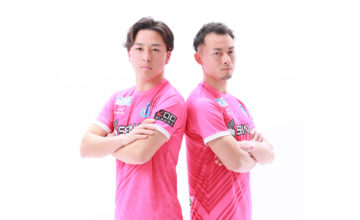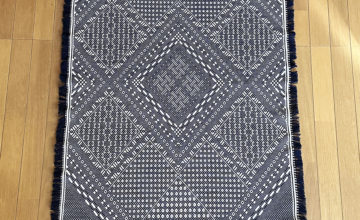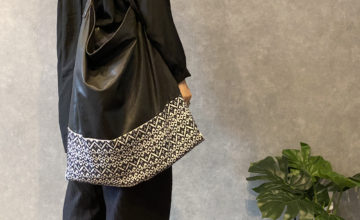Our Kogin to New Works Competition and Exhibition 2023 in Japan Folk Art Gallery
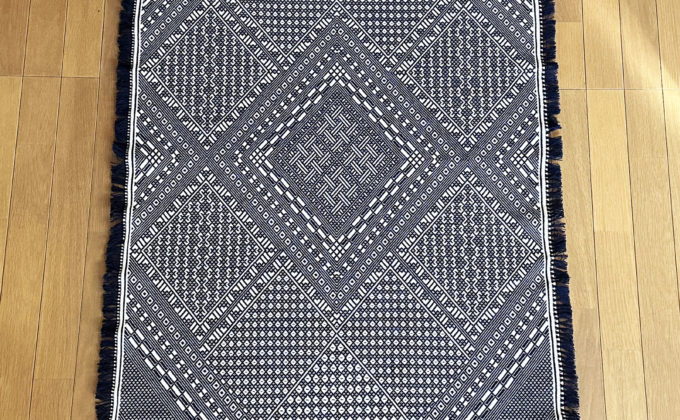
We are pleased to announce that our Kogin blanket was selected as a runner-up in this year’s New Works Competition and Exhibition 2023 in Japan Folk Art Gallery. In the time between the commissioning of the work, the exhibition, and the critique session, we had a lot to think about, and it was truly meaningful for us to participate in this exhibition.
About ot the japan folk craft museum
In order to promote the development of “correct” crafts as advocated by Yanagi Muneyoshi, the Japan Folk Crafts Museum invites entries of traditional handicrafts rooted in daily life and that possess the healthy beauty of natural materials, and aims to exhibit, introduce, and promote the best works of these crafts. In December of each year, after the announcement of the excellent works, the selected and semi-selected works are exhibited and sold at the Japan Folk Crafts Museum.
To ensure that the prototype cloth does not end up as prototype cloth
Since the end of last year, koginbank has been developing a 90cm wide cotton cloth for kogin stitch as a product for sale. We had been developing this cloth with the aim of selling it as a material for kogin stitching, but we gave up on it at the prototype stage because we could not clear the conditions to sell it. The reason was that it did not reach the quality and price we wanted to deliver as a material, but there is nothing inferior about its functionality as a cloth. We wanted to make the large piece of cloth we were able to produce by makers support more valuable, so we came up with the idea of making a large piece of Kogin fabric.
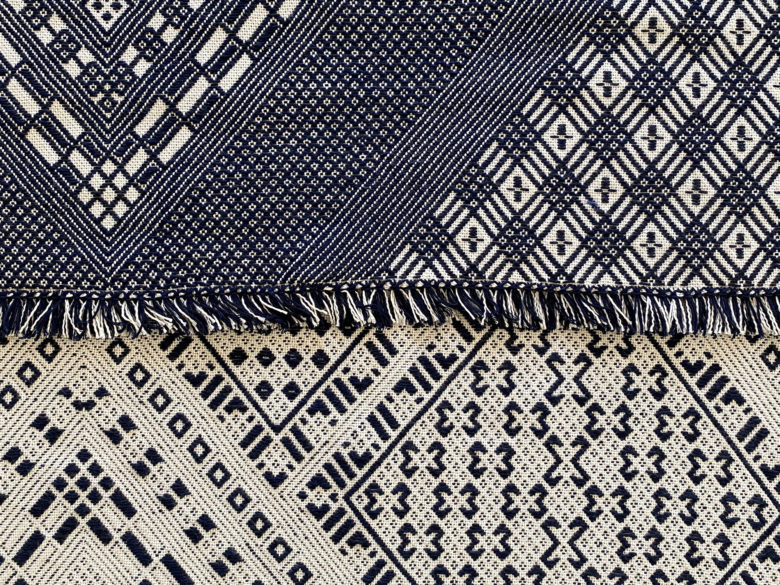
I wanted to make a large piece of work not as art, but as a daily necessities that can be loved and used. I wanted to use it as a blanket, so that I can enjoy the soft texture and durability of the cotton, and love the changes in the indigo-dyed pattern! I could imagine such an idea, but I couldn’t deside who I could ask to make such a blanket.
Personally, I had hoped that Satonobou, a kogin artist whom I interviewed last year, someday create a large piece of work. I wanted to see how her work breathes when she develops a pattern on fabric without preparing a design, just following the needle’s lead, and in an unscheduled and incongruous manner.
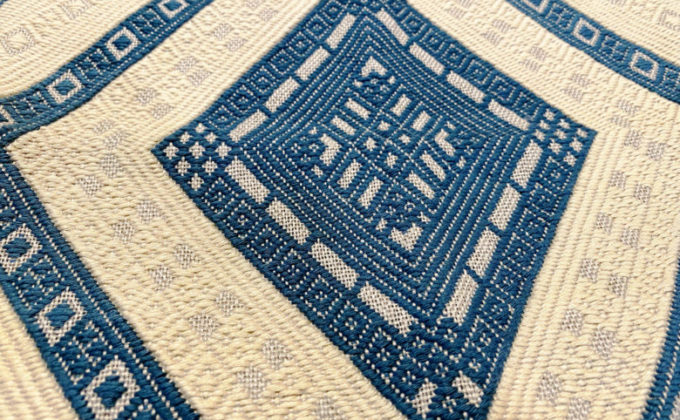
I thought that she would refuse, but I approached Satonobou and she said she would be willing to try, so I left the pattern entirely up to her and entrusted the fabric and threads to her.
It was immediately after this commission that I decided to exhibit our work at this exhibition. I had no idea how it would be evaluated, but I thought that the blanket I asked Satonobou to make would be a way to show how the history of kogin-sashi, a technique used to make cloth durable in the resource-poor snow country, could be brought to life in today’s life. I felt it would be a shame to keep such a work personal.
Production time and weight
After a lapse of about 10 months, the cloth returned to me was filled with indigo patterns.
Looking at it carefully, the pattern is developed by a set of motifs that have been used by many people for a long time. A pattern that is formed by accumulating a number of motifs can be developed precisely, evenly, and beautifully if the pattern is carefully studied with a design, but without a design, there is a risk that the pattern will break down in the middle of the process. However, Satonobou enjoys the progression of the pattern and brings it to fruition. It is like a musician’s session being played out on a piece of cloth, and this is one of the best parts of watching kogin stitch. I felt Satonobou’s breath and rhythm, sincerity and strength in the monotonous repetition of the pattern and in her attempt to show a single dot that tends to disappear.

The production time is about 650 hours. In terms of a full-time job, about 4 months of time was put into this work. I wanted to give a good report back to her. It was a very sobering feeling for me. The works entered in the competition do not require a written explanation of the work. The selection is based solely on the work. When it was selected alongside many other diverse works, I was anxious about how much they would understand our kogin work.
The result of the selection, which arrived one month after my entry, was a semi-selection. This was the next best result after the Award and Selection. They will be displayed and sold in the japan folk craft museum during the Mingeikan exhibition. Anyway, I was able to achieve one of my goals, which I had hoped would catch the attention of many fans of Mingei.
Participating in the Critique Session
A wonderful feature of this exhibition is the critique session, which is open only to exhibitors. This is an opportunity for exhibitors who wish to do so to receive a critique from the judges after the selection results are announced, regardless of whether their work was selected or not. Even works that were not selected can be looked at in person and given pointers on how to evaluate them.
This exhibition is judged in the Ceramics, Dyeing, Textiles, and Wooden and Lacquer Arts categories, but Kogin does not fall into any of these categories and is judged by the judges of all other categories. Critique sessions for each division are also held together with those for braided goods such as baskets and ironware as the other divisions. The jury will critique the works from the unsuccessful entries. And the exhibitors are not only artists but also dealers. I was able to learn not only the judges’ evaluations, but also what kind of handiworks the connoisseurs recommend, and how they see things in various genres and from various angles.
We were also able to take an early look at the museum, which had all the selected works before this exhibition was opened. I was surprising to see the difference between the works on the second floor ( Award winners) and those on the first floor (semi-selections).
We also submitted another Hishi-Sashi blanket, but unfortunately this one was not selected. koginbank fabric and threads were used for this blanket, which was created using the wells in the color scheme pattern of the traditional Hishi-Sashi apron. The point of selection seems to be the use of color. He said it is a personal tasteful impression. It is different from what exists universally and comfortably in our lives. Certainly, in the Mingeikan, I found the use of color in this work to be highly stimulating. However, when people say personal, I wonder if the Hishi-Sashi apron in the past was personal to the girls. I felt the difficulty of challenging this exhibition with Hishi-Sashi, wondering how to use universal colors, although Apron is not the only type of Hishi-Sashi.
Is Kogin a Mingei?
What remained strong in the words I received for the Kogin and Hishi-Sashi at the critique session was that they are personal and hobbyistic. I want them to exist comfortably in our daily lives while conveying the history that was born out of the harsh conditions of life. However, this cannot be done by going back to the past, so we have to think about what form it should take now. He told us too, however, that if we pursue our personal hobbies, the rigor of Kogin will be weakened.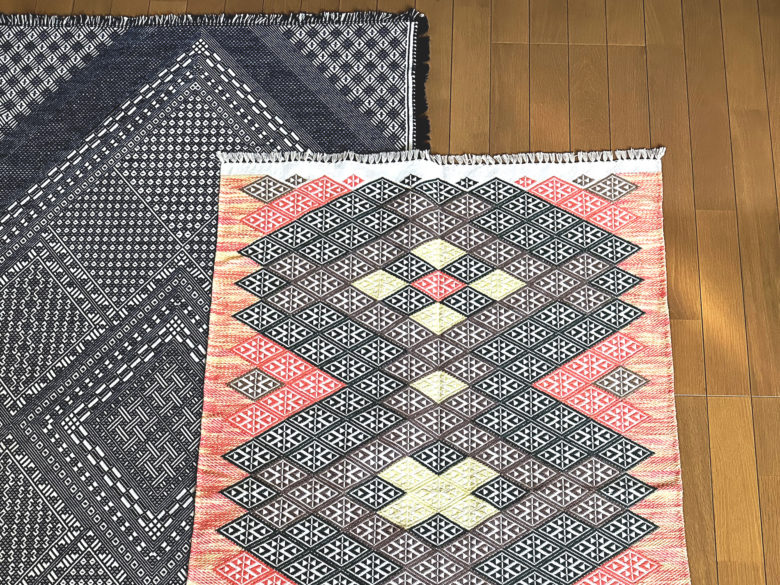 Since the revival of kogin stitching began in the early Showa period, the evolution of kogin stitching over the past nearly 100 years has been nothing but a hobby. Easy-to-stitch fabrics, easy-to-use threads, and rich color variations have made it possible to realize a variety of individual tastes, and it seems to have been driven in the hobby world. What about Kogin products that claim to be traditional crafts? In the pursuit of trends and rationality of the times, is the history that should be handed down not being lost in the haze? Today’s kogin stitch is neither a technique nor a tool that is essential for daily life, but a community where people who love it gather to enjoy it. I felt that this is at odds with Mingei, which is universally good and made with the happiness of the people who use it in mind.
Since the revival of kogin stitching began in the early Showa period, the evolution of kogin stitching over the past nearly 100 years has been nothing but a hobby. Easy-to-stitch fabrics, easy-to-use threads, and rich color variations have made it possible to realize a variety of individual tastes, and it seems to have been driven in the hobby world. What about Kogin products that claim to be traditional crafts? In the pursuit of trends and rationality of the times, is the history that should be handed down not being lost in the haze? Today’s kogin stitch is neither a technique nor a tool that is essential for daily life, but a community where people who love it gather to enjoy it. I felt that this is at odds with Mingei, which is universally good and made with the happiness of the people who use it in mind.
I felt that it was a thing of the past that kogin stitch was a Mingei, and with the current state of kogin stitch and hishi-sashi, it is difficult to aim for prizes at this exhibitions. There is no such thing as a good product, not only in terms of form but also in terms of price, at the expense of the people involved. However, the significance of participating at this exhibitions seems to be immense. It is not a bad thing to continue evolving as a hobby. If you don’t enjoy it, you can’t keep doing it. But if we lose sight of tradition, kogin stitch and hishi-sashi will disappear. This exhibition will be an opportunity to train ourselves to continue to question universality without losing sight of tradition.
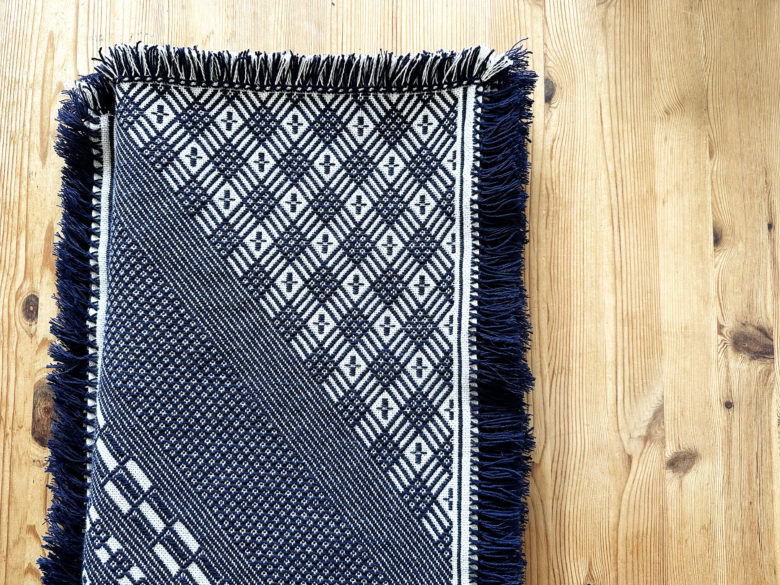 Satonobou herself said that she did not have a solid knowledge or understanding of Mingei during the making of this piece. However, she told me that she entrusted the threads and cloth with the charm and underlying power that she had felt from her own experience with kogin stitching.
Satonobou herself said that she did not have a solid knowledge or understanding of Mingei during the making of this piece. However, she told me that she entrusted the threads and cloth with the charm and underlying power that she had felt from her own experience with kogin stitching.
The other day, I found an easy-to-understand text about Mingei at the Abiko City Shirakaba Literature Museum. One of the articles, which explains what makes mingei crafts beautiful, is “the spirit to surrender to nature’s blessings and traditions, and to work with a carefree spirit. I believe that Satonobou’s work resonated with the judges because he took on the challenge with this very spirit.
New Works Competition and Exhibition 2023


